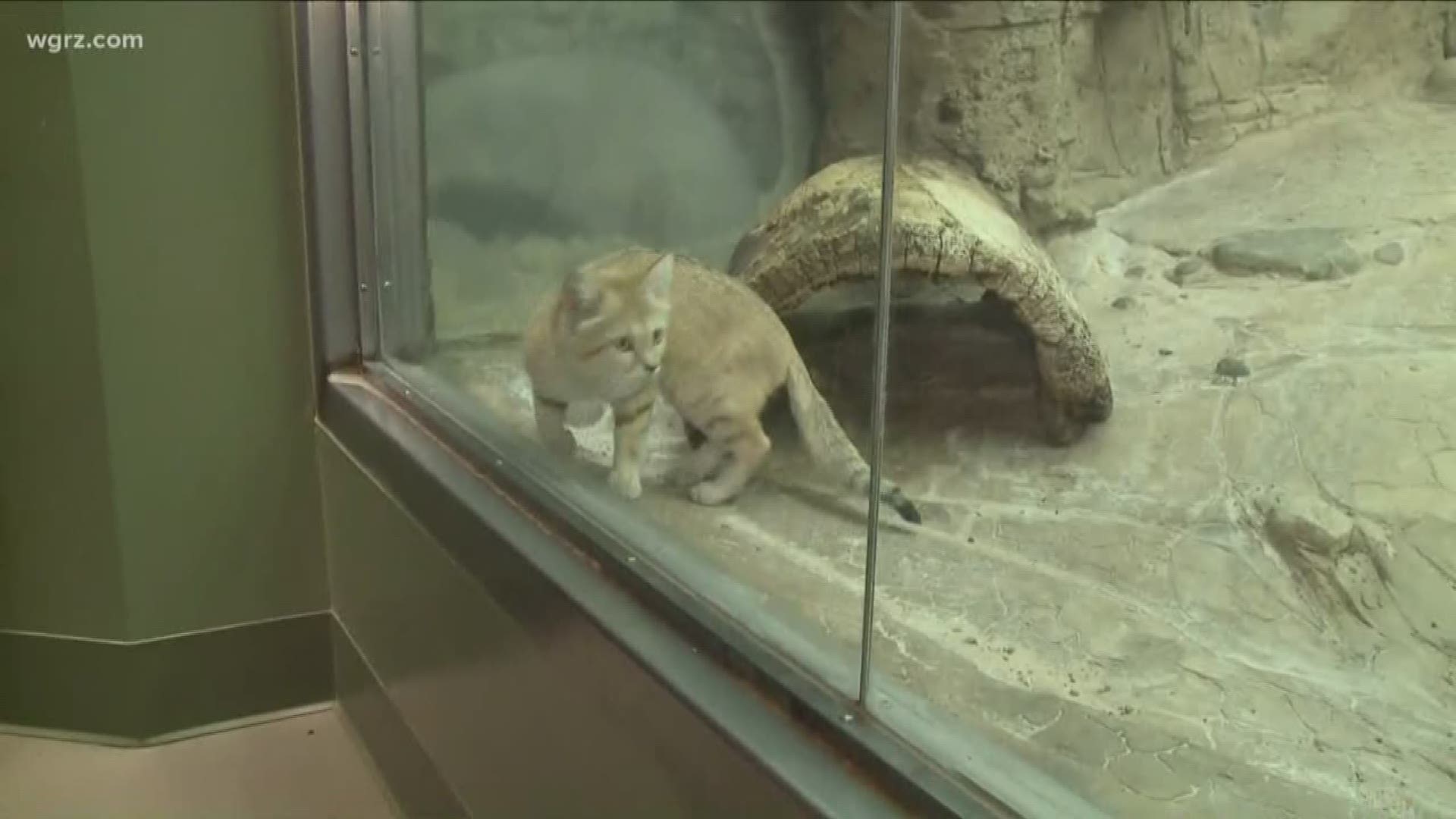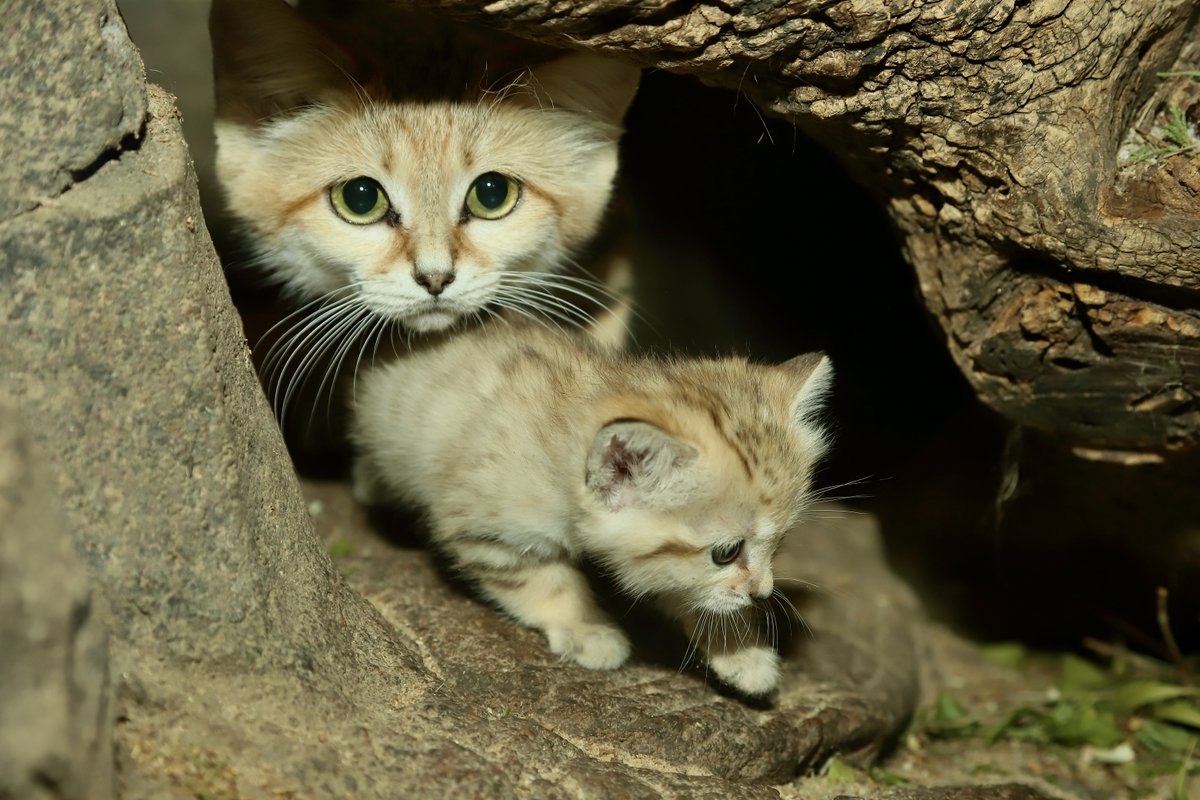Sand Cats Zoo Habitat

Africas Sahara desert throughout the Arabian peninsula.
Sand cats zoo habitat. This animals sand colored coat is hard to see against dry bushes and sand and acts as protection for it. These tiny 3-11 pound cats live in sandy and stony deserts and are the only true desert cat species. The kitten small enough to fit into a teacup was born to mother.
Felis margarita Classified as Near Threatened Sand cats are Native to the deserts of Northern Africa The Middle East and Central Asia. In addition our mountain lions receive large bones and sometimes parts of carcasses while our fishing cats are occasionally given goldfish to catch. Vulnerable arid ecosystems are being rapidly degraded by human settlement and activity especially livestock grazing Allan and Warren 1993 Al-Sharhan et al.
With big ears and large faces sand cats appear top-heavy with heads too big for their small bodies. An Arabian Sand Cat One Plan Conservation Workshop was organised by Al Ain Zoo on 13-14th November 2013. Large ears and thickly furred pads are special adaptations that allow the cat to detect underground prey and survive in extreme conditions.
The cat becomes active at dusk. They are sand-dwelling inhabiting dry plains and rocky valleys where conditions are extreme. Sand cats prefer a very dry arid habitat with little vegetation for which they are well adapted.
However these features are part of their adaptation for life in the deserts where their ears are used to detect prey and thick pads enable them to walk across the hot sand. Not in cages in zoos and with sick people that want a different kind of pet than the neighbor has. And in parts of central Asia.
Deserts to semi-desert areas. Sand cats live exclusively in desert regions. Habitat of the Sand Cat.


















